order

Coleoptera
“Adult Beetles”

Coleoptera
“Larval Beetles”

Diptera
“True Flies”

Ephemeroptera
“Mayflies”

Hemiptera
“True Bugs”

Lepidoptera
“Aquatic Caterpillars, Snout Moths”

Megaloptera
“Alderflies, Dobsonflies, and Fishflies”

Odonata
“Dragonflies and Damselflies”

Plecoptera
“Stoneflies”

Trichoptera
“Caddisflies”
family
Notonectidae
genus
Notonecta
“Backswimmer”
Genus Overview
There are three genera in the family Notonectidae. Notonecta contains 17 species and is the most studied. The group is found across multiple habitats and are considered predators. They swim upside down giving them the nickname of "backswimmers". They feed on the surface or dive down to locate prey. Their bodies are covered with several hairs that trap air allowing them to breath underwater and swim faster.
Characteristics
POLLUTION TOLERANCE
Southeast: up to 9
Mid-Atlantic: 5 - 9
0 = least tolerant, 10 = most tolerant
FEEDING HABITS
Piercer / Predator
MOVEMENT
Climber
Swimmer
Swimmer
DISTRIBUTION
Widespread (east of the Rocky Mtns.)
HABITAT
Lentic-littoral
Lotic-depositional
Lotic-depositional
Diagnostic Characters
Order
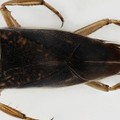
Hemelytra
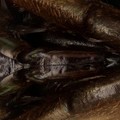
Needle-like Beak
Family
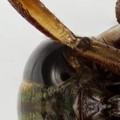
Antennae Shorter than Head
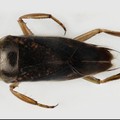
Body Convex Dorsally
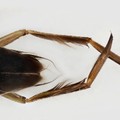
Long, Oar-like Hind Legs
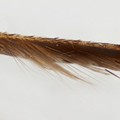
Swimming Hairs on Legs
+ Expanded Character List
Order:
Adults: With or without wings. If wings present, forewings typically leathery or hard basally and translucent and flexible apically. Nymphs: With or without wing pads. Segmented legs present. Mandibles hidden within needle-like beak in adults and nymphs.
Family:
The mouthparts are slender, needle-like; the antennae are short and hidden from dorsal view; the body is parallel-sided and at least ¼ inch (5 mm) long; the front legs are slender; the middle and hind legs are fringed with swimming hairs; the hind legs are long and flattened, oar-like; swims upside down.
Genus:
Eyes not touching, without a hair-lined pit on hemelytral, antennae 4 segmented
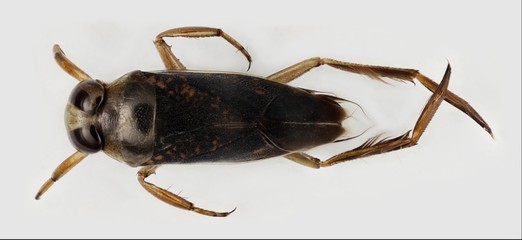
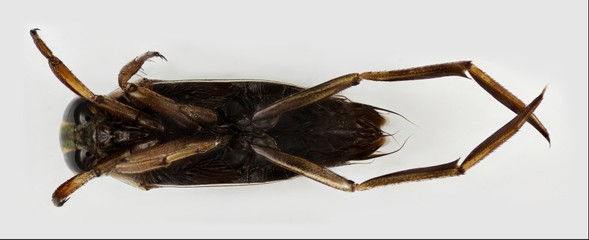
Dorsal
Ventral



